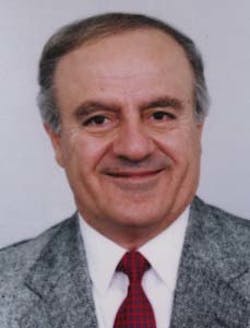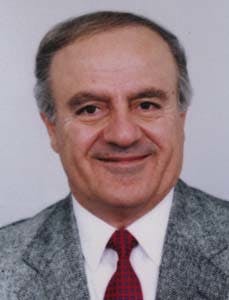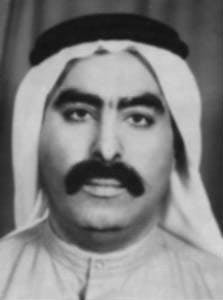Landfills and recycling provide alternatives for OBM disposal
OIL-BASED MUD-1
Iskander S. Hanna, Salim A. AbukhamsinIn the Arabian Gulf, two alternatives, landfill biode gradation and processing/recycling, provide the only acceptable methods of oil-based mud (OBM) disposal and treatment as opposed to overboard dumping.
Saudi Aramco
Dhahran
The use of oil-based mud (OBM) in the Arabian Gulf has increased over the past few years, especially in horizontal drilling applications. OBMs help prevent hole problems including tight-hole situations, stuck pipe, and borehole instability within shale sections.
Although OBMs have been shown to successfully treat these problems, it has became obvious that current methods of handling OBMs and oilwet drill cuttings are inadequate.
This first part of a two-part series describes economic considerations and handling methods. The second part describes setups for solids-control, mud-mixing, and storage facilities.
Technical and environmental issues
When OBMs are used, drilling rigs must convert to a minimal or zero-discharge practice. A simple mud-handling facility can be built onshore to clean and recondition previously used OBM, which can then be recycled for reuse. In addition, oil-wet drill solids and cuttings can be collected in special containers and taken to an approved waste landfill.Depending on the level of drilling activity, building a simple OBM facility can achieve considerable cost savings by recycling the fluids. Diesel OBM consists of using diesel oil as the continuous external phase and brine as the internal phase. Because of the presence of aromatics, which are relatively soluble in water, diesel oil is toxic.
In response to increasing environmental concerns, a low-toxicity oil was introduced. A low-toxicity OBM is similar to a conventional diesel OBM except most of the aromatics have been removed from the base oil.1
Muds made with low-toxicity oil are 5-50 times less toxic to marine life. These muds present less of a hazard to personnel and have a lower flash point; however, these muds are between three and four times more expensive than conventional diesel OBMs.
Inverted-emulsion oil muds offer a great advantage in both lubricity and hole stabilization for horizontal wells. Unfortunately, the use of OBM used offshore presents technical and environmental problems, both of which are intimately linked.
Dealing with the environmental issue is a simple matter: either minimize, or better yet, completely discontinue the dumping of OBM and mud-contaminated cuttings into the sea. However, the technical issues are more complex, but can be dealt with by minimizing mud volumes.
The main problem in utilizing OBM is the buildup of solids. Whether drilled solids or weighted material are used to slug down the drill pipe before tripping, it is impossible to remove solids without some loss of whole mud. If frequent short bit runs are made, especially with small-bore tools in the hole such as measurement-while-drilling (MWD) tools and turbines, the addition of slugs will rapidly raise mud density.
The alternative, eliminating pipe slugs, results in a greater loss of mud, wasted time in tripping, and an unsafe working environment on the rig floor.
All solids-removal equipment, by definition, discards oil-wet solid material. Although the efficient use of centrifuges can minimize fluid loss, the problem still remains. For instance, 1,000 ft of 81/2-in. hole will still produce about 72 bbl of oily rock.
This fluid has to be disposed of somewhere, either overboard into the sea, or into a boat or container for removal, cleaning, and disposal onshore. Although very damaging to the environment, the easiest method is to dump the fluid overboard.
OBM is very expensive to prepare, but becomes cost effective when reused. However, it is necessary to properly dilute the high-solids mud before its reuse. If mud cannot be effectively cleaned at the rig, then it becomes vital between uses to clean the mud at an onshore mud plant.
A mud that is weighted with limestone will have a higher initial solids content than a mud weighted to the same density with barite. Subsequently, it is important that the method of handling OBMs and oil-contaminated cuttings be carefully selected to meet safe environment standards. When an OBM job is planned, the existing practice and the latest improved methods need to be reviewed.
Arabian Gulf protocol
In 1989, the Gulf region contracting countries signed a regional protocol for cooperation on the protection of the marine environment from pollution, resulting from the exploration and exploitation of the continental shelf.The regional protocol prohibited the discharge of oilbased drilling fluids in Arabian Gulf waters (Article IX, p. 30).
After reviewing all available technology, the best three alternatives were considered:2-8
- Dispose the used OBM and the associated oil-wet drilled cuttings in the Arabian Gulf.
- Transport the mud to shore, then truck it to an existing commercial landfill facility. This practice biodegrades the waste OBM by plowing it into soil. None of the mud is recovered for recycling.
- Build a new processing/recycling mud-handling facility to condition, treat, and remove the drill solids and fines. This practice will permit the OBM, formerly disposed of, to be recycled as the component of a new base mud. Dump the associated oilwet drilled cuttings at an approved waste disposal landfill.
Economic basis
To achieve the best economical results while minimizing ecological damage, a degree of coordinated planning is required between the drilling operations, drilling/ engineering personnel, and rig crews.The following are the assumptions used for developing the economic analysis for these alternatives:
- Project life of 15 years. Selected because of the nature of the project.
- An average of 12 wells/year. Based on drilling one well/month (average).
- An average of 3,585 bbl/well. Ship out new mud at the prevailing per-bbl cost of OBM. Holes need to be displaced with OBM after setting and cementing the 133/8-in. casing, and drilling about 1,500 ft of 121/4 in. and 2,000 ft of 81/2 in. of hole.
- Return 2,500 bbl/well. Upon completion of a well, 2,500 bbl of used OBM is returned from offshore or left for disposal.
- The cost to recycle and condition 1 bbl of used OBM is estimated at $43/bbl.
- For the option of disposing used OBM at a landfill, the landfill rate averages $100/bbl.
Capital requirements for the three alternative are:
- Overboard dumping. Requires no investment but not environmentally safe.
- Landfill. Requires new mud containers to carry used mud from offshore to the landfill area.
- Mud-handling facility. Includes building a new mud plant to serve offshore rigs and eliminate trucking costs associated with transporting used and new mud to and from offshore to the landfill. The total savings in mud cost/year is estimated to be very high. The maintenance and operating costs are based on using 12 employees to operate the plant.
All figures will have a negative net present value, as cost savings instead of revenues generate the economic results. The mud facility will have the greatest negative net present value.
Because cost savings are responsible for generating these alternatives, an incremental analysis needs to be conducted in order to compare each alternative against the "do-nothing" base case. This incremental analysis must show that the mud facility has the highest rate of return, as compared against the "do-nothing" case.
General handling practices
For a medium-to-large operation, enormous quantities of OBM are consumed, most of which get discharged overboard. The average volume discharged can reach up to 2,500 bbl of OBM per well. This is almost 70% of the total volume used per well.After reviewing available technology, it appears that the most economical way is to practice minimal discharge in the offshore drilling operations where OBMs are used.
This would include the collection of drill cuttings and other solids discharged from the solids control equipment for disposal onshore. Other oil-contaminated fluid volumes, such as spacers, are to be collected and sent to shore for processing and disposal.
Where existing rig plumbing permits, pipe rack drainage and other runoff is to be collected. By doing so, it is estimated that discharge can be reduced from 2,130 bbl/well to approximately 70 bbl/well. A reduction in the discharge level from 60% to less than 2% can be achieved when this practice is adopted.
Over 20 methods and systems for handling oil-based waste were reviewed. These methods include: neat systems, cuttings processor, centrifuge wash, vacuum distillation system, immersion wash, super critical CO2 leaching, and cuttings dryer system. Also included are, fluidized bed combustors, low-toxic mud recovery system, low-toxic mud cuttings cleaner, land-based cuttings-disposal system, hydrojet cutting washer, cutting burner, waste treatment system, cutting dryer, and hopper barge.
It is the authors' opinion that recycling OBM and disposing of the cuttings in an approved landfill is the most economical and environmentally safe method.
In order to properly plan and execute the process of handling OBMs and waste offshore, rig modification, workboat logistics, and mud-handling facilities must be considered.
Rig modifications and boats
Rig drainage should be converted to a single-point discharge. The cost for such modifications may vary up to $100,000. Depending on the condition, rigs can be modified to discharge into a container hung over the side.Other rigs may require augers to convey the material to a container on the main deck. All new drilling-rig contracts should include single-point discharge. When the drilling contracts are renewed, it is important to upgrade the solids control equipment.
The existing state of solids control equipment on the rigs is an important factor that needs attention. Very-fine shaker screens should be used. Hydrocyclones should also be used to their best advantage. These operational aspects need close inspection. The obvious place to start is with the drilling contract.
It is important to select proper solids-control equipment and to improve its efficiency. There is also a need for a solids-control equipment technician/mud engineer who can evaluate and optimize the performance of all existing solids-control equipment with recommendations for improvement. This person should have a working knowledge of OBM to make recommendations for treating and reconditioning the returned OBM.
Volumes returned to the mud facility may exceed those shipped to the drilling rigs. This will eventually lead to a storage problem. Sufficient storage space should be available at the mud plant.
Mud storage at the pier should be located directly at the water's edge. If the tanks develop a leak, a considerable volume of OBM could spill directly into the water. Storage tanks should have a dike or other containment system in place to contain spills. Constructing dikes around these tanks or placing large drip pans under the tanks is another possible solution.
Using the dump-and-dilute method to control solids buildup in OBMs is the biggest problem. For water-based muds (WBM), this practice may be acceptable where the toxicity and the cost of the mud are low.
However, when OBMs are used, this practice can no longer be tolerated. The economical reasons alone should be enough to discourage this mode of operation. OBMs are two to six times more expensive than WBMs.
In addition, if the oil is toxic, as diesel is, then the continued practice of dumping OBM would imply careless disregard for the environment. Only nonweighted, reconditioned OBM should be shipped to the rigs.
Weighting material can be added at the rig. This will eliminate the problems and difficulties associated with pumping heavy fluids from the boat up to the rig and will also prevent potential settling of weighted material in the boat's tanks.
It is important to try and utilize oil/water ratios as low as is practical to reduce the required amount of solid weighting agent. Try to limit the use of OBM and constantly ask, "Can this hole section be drilled with some type of WBM?"
For platform drilling, consider presetting casing strings to consolidate OBM usage. By doing so, transportation costs and the potential for mud loss can be minimized. Mud loss during connections can be minimized if check valves are installed in the saver sub.
A fleet of sufficient boats should be available to service the rigs. Use a reasonable number of workboats to haul OBM to and from the rigs, and oil-wet cuttings and waste from the rigs to shore. At least 1.5 boats per rig are required.
The unnecessary transportation of mud to and from the plant should be avoided. This practice exposes the operator to potential losses. Each time a volume of fluid is moved, a small amount will be lost in the transfer.
Minimizing mobilization also saves on transportation costs. Each work boat transports a load of about 2,000 bbl of used mud.
Mud-handling facility
A mud-handling facility should be built onshore. All mixing, cleaning, and shortterm storage of OBM used offshore should be done at this location. Furthermore, it is recommended that all the solids should be stripped from the low-density used mud and returned to this plant.By the time the mud is returned, most of the solids are so small that they become more harmful than they are worth. High-density muds require special consideration.
Build a mud-handling facility at the dock to process and recycle the used OBM. The proposed location should be paved with asphalt. An extensive fire-water system should be installed covering the pier area. Yard lighting should also be installed, and power and telephone services must be available in the immediate area.
It is a good practice to collect the oil-contaminated cuttings and discharges in containers, then haul them ashore for treatment or disposal. A reduction in the discharge level from 60% to less than 2% can be achieved when this practice is adopted.
Collect the oil-wet cuttings and waste in containers. Locate an approved landfill waste dump to discard the oilwet cuttings and waste.
Containers of 20-bbl capacity will haul shale shaker cuttings, solids control equipment discharge, and other oil-contaminated volumes to the plant for processing or disposal. The containers should be furnished with nylon bags to ensure leakage containment.
The cost of one container is estimated at $2,000-4,000, depending on the design. There are many different designs and types of containers, such as dumpsters, rectangular tanks, round/stackable, and P-tanks. Fig. 1 shows a hopper or P-tank cuttings container.
These containers must have lids that can be closed during transportation. They must also be small so their weight does not become excessive. A stackable design would be advantageous.
The containers will be filled with oil-wet cuttings and waste on the rigs and shipped from the rigs by boat to the pier. The containers will be emptied in the back of a sealed truck. The containers then will be placed back on a boat and returned to the rigs for reuse. The truck will carry the waste and dispose of it in a landfill.
If a maximum of 2,000 bbl capacity will be required at any given time, this capacity could be provided by 100 containers of 20 bbl each.
The alternative of disposing used mud by land farming is uneconomical compared to recycling.Acknowledgments
Acknowledgments
The authors wish to thank Matar M. Al-Rweili for his encouragement and support. The authors gratefully acknowledge the contributions of all those individuals who helped make this article possible.References
- Hanna, I.S., Jones L., and Mason S., "Handling of oil base muds, current practices and recommendations for improvement," presented at the IADC Middle East conference, Abu Dhabi, Oct. 9, 1992.
- Hanna, I.S., Mobil Exploration & Southeast Inc. internal report, "Fluids & muds, handling of oilbase waste," New Orleans, Dec. 5, 1983.
- Mobil Exploration & Southeast Inc. internal report-Alabama State Waters, "Rig-site treatment process-Handling drilling fluids disposal in Mary Ann Field," New Orleans, Apr. 4, 1984.
- Mobil Exploration & Southeast Inc. Drilling Procedure Guide-Handling Oil-Based Mud in the North Sea, "The appraisal of drilling fluids and cuttings cleaning process," July 1983.
- Daily Drilling Reports, 1991-92.
- Saudi Aramco Drilling Engineering, "Oil base drilling fluids offshore and pollution control," Report No. DWED/1/129/92, 1992.
- Chevron Services Co., "List of cuttings disposal techniques," September 1992.
- Mobil Drilling Services, "Oil base mud manual," No. 0315D, August 1995.
The Authors
Iskander S. Hanna is a supervisor for the drilling and workover services department in Saudi Aramco's materials acquisition and forecasting unit. He joined Saudi Aramco in 1991. Hanna has over 27 years' experience in drilling operations, drilling engineering, and drilling materials in the U.S., Europe, Middle East, Asia, and North Africa. He holds a BS in petroleum engineering from the University of Zagreb, Croatia, graduating in October 1971. Hanna also holds an MS in petroleum engineering from Tulane University in New Orleans, graduating in December 1989. He received his PhD in petroleum engineering from Kennedy-Western University in Boise, Idaho, in June 1993.
Salim A. Abukhamsin is currently the manager for Saudi Aramco's E&P facilities and technology department. He holds a BS in chemical engineering from Kfupm, Saudi Arabia, graduating in 1973. Abukhamsin also holds an MS in petroleum engineering from the University of Oklahoma, graduating in 1978. He has 25 years of experience in production engineering operations.
Copyright 1998 Oil & Gas Journal. All Rights Reserved.


